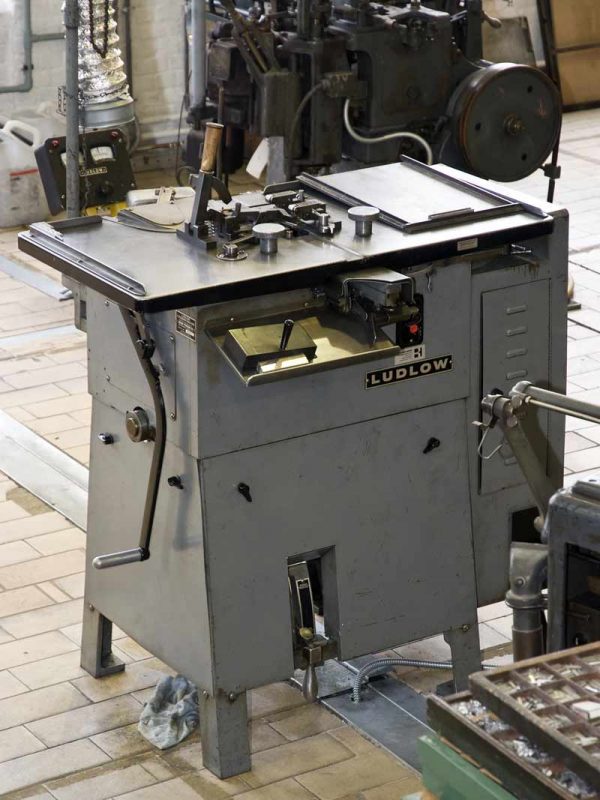The ‘Industriemuseum‘ is housed in an old cotton mill in Gent, Belgium. Its collection mainly focuses on textile but there is quite a bit of printing equipment on display as well. The museum graciously allowed me to photograph that section so that I could add this page to my overview of printing museums.
The equipment in the museum all comes from local printing companies. The image below is from such a company, Drukkerij Erasmus, and was taken in 1930. It shows the typesetting, printing, and finishing equipment of those days. Look at how many people were involved in setting type and compare that to the one or two prepress operators that many printing companies nowadays have.
Among the oldest presses on display is this cylinder press from 1878. It was used to print posters.
This close-up shows the cylinder as well as the lead type that is being printed.
From the late 19th century onwards printing images was typically done using lithography. There are several lithographic stones in the museum. I only photographed a detail of one stone, which had the image of an American bank note on it.
Obviously no collection is complete if it doesn’t include at least one Heidelberg press.
The museum also displays three hot metal typecasting machines which are all still in use during special events. This Intertype C4 typecaster was mainly used in the newspaper industry.
It are the little paraphernalia like this old tin that add realism to the museum setting. Dixon’s Mold Polish is a cleaner, polisher and lubricant for type and slug casting machine molds and mouthpieces.
I have no idea whether you also need mold polish with the Ludlow Typograph, a typecasting machine for setting headlines.
One of the things I learned in the MIAT is that printers would sometimes take those pages set using hot metal type and print them on a white baryte paper using a small proof press such as the one below. A repro camera was then used to transfer that master image to an offset printing plate.
Setting text for offset printing became a lot easier with the advent of photo typesetting, or cold type as it is sometimes called. This Agfa Compugraphic Editwriter 7500 is one of the classic machines from the 1970s.
The disks in the left storage cabinet are actually 8-inch floppies. I still remember getting a Scangraphic operator very upset by using one as a fan and joking that it was the only remaining practical use of the technology.
Can’t get enough of historic printing equipment? Have a look at my photos of the Kaartenmuseum, Plantin-Moretus museum, Historische drukkerij and the Imprimerie du Fourneau Saint-Michel. You might also like the pages on the history of printing and my collection of photochrome prints.











This was the first typesetting machine I ever used. I can still remember typing the init line. We were basically doing HTML (blind) before the internet was invented.
i have one of these computers ? what is it worth ?
I have no idea if these systems are actually worth much, but I don’t think so.